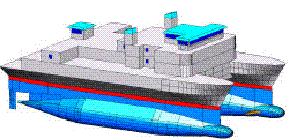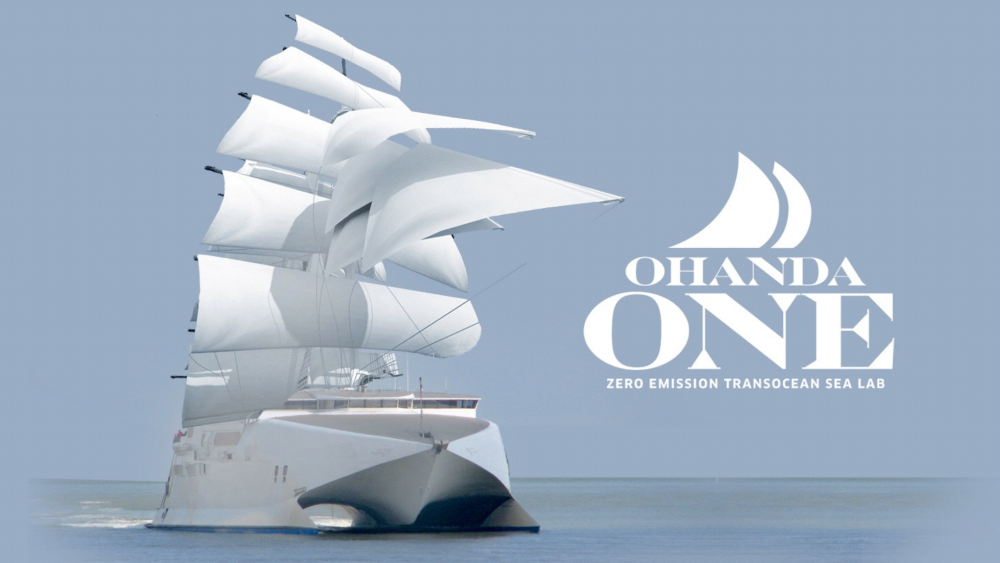Looking at how commercial sailing fleets have developed after the introduction of the first steam-powered ocean liners in the middle of the 19th century is quite impressive. Within a few decades and latest with the armament of the First World War the great clippers and windjammers simply just disappeared. A new fossil fuels burning technology took over and sailing became a hobby. As a consequence the further development and ongoing improvement of the vessel design for large sailing ocean liners – a continuous process for hundreds of years – ended with speedy ships like the five-mast full rigged German Preussen, which was wrecked by a small British cross-channel steamer in 1910. It took an entire century until the debate about the tightening climate change refueled the idea that sailing might be a smart alternative to burning oil. But from what can be observed, besides some high-end luxury yachts, the focus is clearly on cargo ships rather than on passenger transport.

Sailing sucks!
Compared to flying, sailing is of course such a time consuming and unpredictable way of traveling that it feels hard to imagine how it could ever compete with aviation. And besides that, the traditional design of a ship comes with a lot of funky agitation for its passengers with its rolling, pitching and healing, meaning the side wind will tilt the sailing ship the stronger it gets. So the very prolonged time one would spend on a sailing ship could feel like an endless roller coaster ride, making it impossible to do anything else but feeling sea sick. Not really an option!
Lessons learned
Since improving the stability of a sea voyage is relevant to all types of vessels, there has been quite some progress in the field. The most simple one: The bigger, the better! Ships are not only supersized to improve their economic profitability, but because the longer and more massy they get, the less impact the waves have. In addition modern ships have ballast water tanks to balance their gauge depending on their load and to control their inclination. To balance the numerous variables that change quickly, like wind, waves, ship motion, draft, etc. many modern vessels also have fin stabilizers. And last but not least even huge rotary cylinders employing the Magnus effect and massive anti-rolling gyros can be used to decrease the rolling.
Since healing is especially relevant for sailing ships a ballasted keel is often added to the hull. Another very traditional way to improve stability is a multi-hulled design featuring two or more parallel hulls, also known as catamaran, deriving its stability from its wider beam geometry. In 1938 the traditional catamaran design was further developed by Canadian Frederick G. Creed to a wave-piercing design called SWATH – small-waterplane-area twin hull – ” […] reducing the wave-generating resistance by moving displacement volume below the waterline, using a pair of tubular, submarine-like hulls, connected by pylons to the bridge deck with a narrow waterline cross-section. The submerged hulls are minimally affected by waves.” (Wikipedia)

Wicked Waste of Time
Time is relative – not just in its physical dimension, but also as we refer to it as human beings. When we waste our time, it usually means we have to stand its passing without being able to render anything useful. Now useful again can be very relative or subjective, ranging from relaxing or contemplating to socializing, learning or working. On modern cruise liners the suggested pastime mainly consists of consuming, be it shopping, eating, entertainment or visiting touristy attractions – holidays packed with teasers and animation. The benefit here might not just depend on a fat purse, but also on how one individually values this kind of distraction, which – thinking of climate change – is also very energy consuming and often disconnecting the passengers from the medium they perambulate – the sea.
On the other hand it is well known that times passes quickly while doing something interesting or inspiring. For many people working is a very relevant activity too, not only to make their living, but also to progress on something. The aspiring 21st century has taught us, that due to the technical progress for a growing number of people the place of work is loosing its relevance as long as they have access to the Internet. And even for the production of physical goods, due to 3d printing, laser cutters, etc. things that required a factory in the last millennium, to a certain extend can now be produced in a studio. So instead of turning a vessel into a temple of consumerism, why not turn it into an inspiring co-working space, academy and fablab? This could go hand in hand with a partly usage as a permanent oceanic research platform, also connecting the passengers with the medium they perambulate – the sea!
Phreakin’ Physics
If you want to move something, the smaller its mass the easier it gets. But as stated earlier, for a vessel to be stable in the waving water, the bigger and the higher its mass, the better. So if one wants to design a ship that uses as little energy as possible to move (be it by the wind or an electric motor – and the latter will be compulsory anyway!), it should be as lightweight as possible. Looking at the stabilizing options discussed above, everything mass related comes with higher energy consumption, so for OHANDA ONE not all of them seem ideal or even applicable.
Regarding the size from the long tradition of vessel design and with a growing understanding of hydrodynamics it turned out that a certain length for an ocean vessel (not a racing yacht!) is a requirement not only for comfort, but also for speed and security. Typical smaller ocean vessels are usually at least 60 to 80 meters long, larger ones several hundred meters. The speedy five-mast full rigged German Preussen was about 130m long.
Another relevant quantity results from the amount of people one would want to host on board. From an economic perspective an easy answer could be: the more the better. Modern ocean liners host thousands of people, but for the desired creation of an inspiring, creative and productive environment referring to Dunbar’s theory 150 meaningful contacts sound like a more desirable estimate. Let’s roughly add another 30 to 50 people for crew, ocean lab staff etc. so that there should be space and comfort for about 150 to 200 people being hosted for 1 to 4 weeks, including their food, cabins, office spaces, meeting rooms, labs etc. Without any deeper discussing of these numbers here, let’s just take them as a hypothetical reference.
Since most existing modern ferry boats of that scale come with a fancy wave-pearcing SWATH based design that also reduces the wave-generating water resistance and boosts their speed, why not just take one of those then and put some sails on it? Hmm … here comes the downside of SWATH: the relatively thin pylons between the deck and the submerged hulls of a SWATH do not add much extra lift when the ship gets out of balance, so per se they are not very robust to any shifting of weight. Since sailing implies wind that can create a massive side pressure resulting in healing, SWATH really does not sound like a good choice at first glance. But if we combined it with computer controlled ballast tanks, proactive dynamic fin stabilizers and some voodoo fantasy ship design? Wouldn’t that sound like an interesting design challenge worth a try?

![]()
